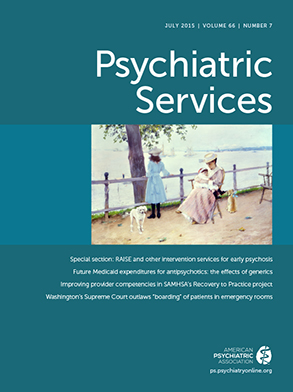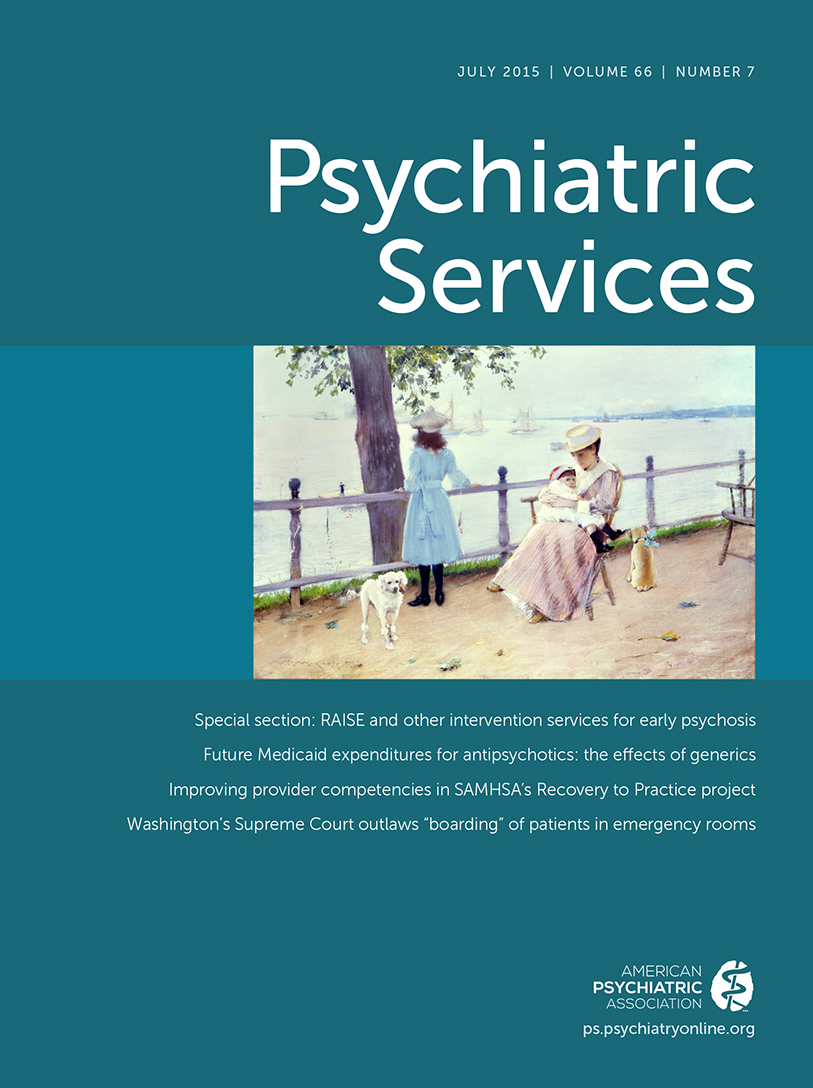Four articles, two brief reports, and three columns in this issue focus on coordinated specialty care programs for individuals experiencing early psychosis. Such programs, which seek to change the trajectory and prognosis of schizophrenia through comprehensive and aggressive treatment in the earliest stages of illness, have been widely implemented in other countries, but not in the United States. In 2008, the National Institute of Mental Health (NIMH) announced the RAISE project (Recovery After an Initial Schizophrenia Episode), later awarding contracts to two research groups to develop and test potential interventions. The special section features reports from both groups. In Taking Issue, Amy B. Goldstein, Ph.D., and her NIMH colleagues describe the ways in which each report in the special section addresses implementation challenges identified when RAISE was launched (page
665). In the lead article, Kim T. Mueser, Ph.D., and colleagues from one of the NIMH-funded groups describe the intervention they developed, known as the NAVIGATE program. Core services include family education, individual resiliency training, supported employment and education, and individualized medication treatment (page
681). In the second article, Lisa B. Dixon, M.D., M.P.H., principal investigator for the other NIMH-funded group, and her colleagues provide an overview of services included in the intervention they developed—the RAISE Connection Program. These authors also present outcome data on functioning, symptoms, and remission among clients who received services for up to two years at Connection sites in Baltimore and New York City (page
692). Because engagement is critical to the effectiveness of these programs, researchers at the Baltimore and New York sites examined data from semistructured interviews with clients—both those who were well engaged and those who were not. As Alicia Lucksted, Ph.D., and colleagues report, Connection’s focus on life goals was a central factor in engaging clients. Most interviewees were under age 25, and their engagement hinged substantially on Connection’s nonclinical services, such as supported education and employment (page
700). In a third article, Vinod H. Srihari, M.D., and colleagues present findings from a controlled trial of STEP (Specialized Treatment Early in Psychosis). STEP, which is not part of the RAISE initiative, was established in 2006 by the Connecticut Mental Health Center. After one year, STEP participants had significantly fewer and shorter hospital stays than those in usual treatment and demonstrated better vocational engagement (page
706). Of the three columns in the special section, two are from RAISE researchers associated with the Connection Program. In Research & Services Partnerships, Susan M. Essock, Ph.D., and coauthors describe the Connection Program as a partnership involving researchers and state mental health authorities. The authors explain why states are interested in first-episode services and describe the development of the partnership, financing mechanisms, and plans to add teams in Maryland and New York (page
672). As these programs are implemented more widely, new teams’ fidelity to the intervention is essential. In the Best Practices column, Dr. Essock and colleagues present a practical approach to fidelity monitoring that they developed for the Connection Program—one that uses routinely available administrative data as well as information from client interviews (page
675). Widespread dissemination will also require a funding mechanism that not only is compatible with approaches already used by payers but also generates incentives for providers. In Economic Grand Rounds, Richard G. Frank, Ph.D., and colleagues propose a funding model with three components and describe how such a model might be implemented (page
678). Two brief reports complete the special section. The first, by Jean Addington, Ph.D., and others associated with the NAVIGATE program, presents findings from a study that examined duration of untreated psychosis (DUP) among community mental health center clients. Median DUP was 74 weeks, and two-thirds of participants had DUP of greater than six months (page
754). Finally, in a two-year study of patients receiving first-episode services in Montreal, Clairélaine Ouellet-Plamondon, M.D., F.R.C.P.C., and colleagues found high rates of disengagement among immigrants, even though their medication adherence was similar to that of nonimmigrants (page
758).

